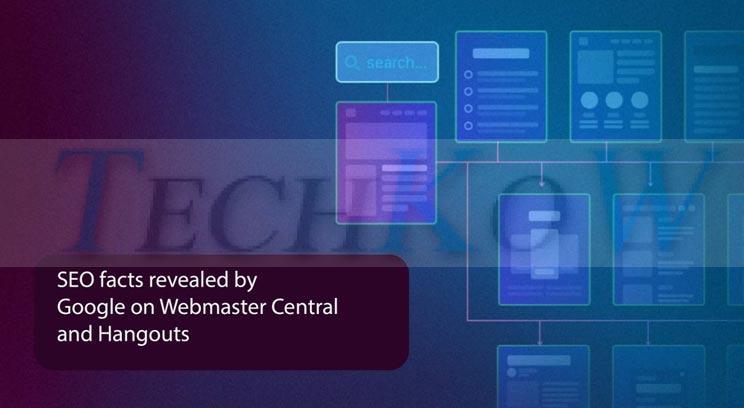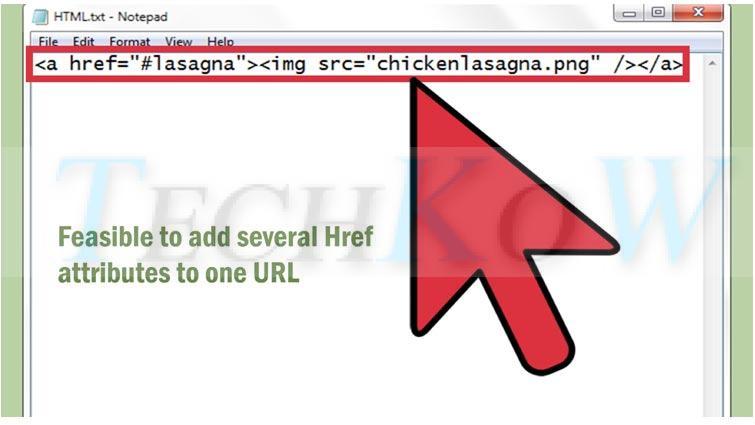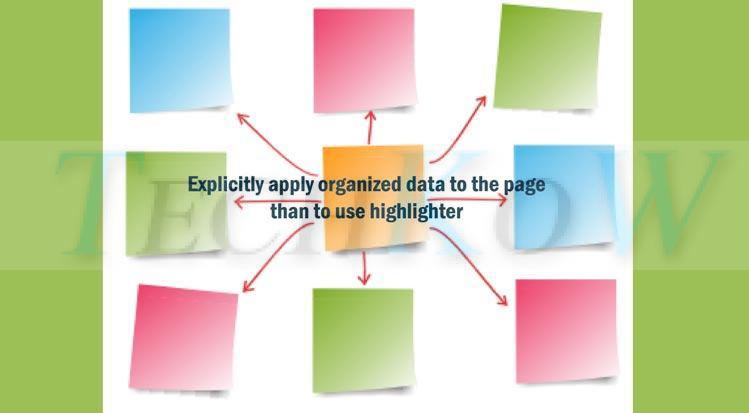Are you looking for some fascinating and informative facts about SEO exposed by Google on Webmaster Central & Hangouts?
• Google Webmaster Central Hangouts:

A significant source of knowledge that you can still keep a watch on is ‘Google Webmaster Central Hangout’. It is open to all, you can submit questions or automatically answer them online to specialists, and you can get tips directly from Google. On their website, off-page and on-page SEO information listed, you can search Google’s operating hours instantly.
Let’s discover the 25 most interesting SEO facts revealed by Google on Webmaster Central and Hangouts:
1. Content Penalty for Replication Should Not Occur: A lengthy topic has been material replication. Let’s smash an SEO misconception: a Google penalty would get you redundant content. This isn’t real. Google can simply disregard duplicate content in an adware content scenario. For any search question, Google attempts to provide appropriate answers.
2. Google knows your workplace and does not dread admitting it: These days, when we have a lot of data in them, our cell phones are like they are stuck to our necks. We have signed into an email, we have instant access to our accounts, and with a fast Google search, even though we walk or travel, we can quickly find anything we want. Google Assistant makes it easy to conduct voice searches and configure our phone stuff, even if we’re offline.
3. In the site design, new content should be highly linked.: Googlebot crawls through the interface of the website. So, ensure that you have a meta description to help Google index it, and new content is connected high up in the design of the site. If you add it higher in the website architecture, whatever you want to show up in the search results, it will certainly help the Search engine.
4. The URL delete tool impacts all domain variants of the site: It is definitely not suggested to remove all the URL or HTTP from your entire website just for the sake of site maintenance or any kind of changes in the web page or sitemap. URL removing tool may disturb HTTP & HTTPS of the whole website, and you are not supposed to do so.
5. Feasible to add several Href attributes to one URL: Specialists claim that x-default and multiple href tags can be added to the same tab, respectively. The default x-href attribute does not have to be a separate tab. You may have one for UK English, American English as an example, and select one of them as the predominant one to use for a website.

6. Mobile PageSpeed is not yet a criterion for ranking: Getting a mobile page speed increases the user interface and it is a vital criterion for a site redesign, but it has not been used to produce mobile queries as an index ranking element until now. Google does not consider that at all but retaining the count of mobile page speed is an effective SEO task that you can’t forget.
7. You can get a Penalty for Site Design: Google Panda is an application that checks the overall performance and functionality of the website, and it takes it into account including site planning. If it impacts the overall functionality of the web anyway, you can earn a Google Panda penalty for poor site design.
8. Suggested to have the required URL to score your images better in Google: An interesting detail we’ve learned from Google Webmaster Central Hangout is the influence of an image’s URL on Google. The key argument is that, when rating photos, Google aims at the URL. Inevitably, SEO-friendly URLs will contribute to higher perceived significance, progressing from an SEO perspective back to an edge.
9. Google will consider the value of Nofollow Link as a ‘Clue’: Both relation attributes, both user-generated and Nofollow, will be viewed by Google as a clue for lead generation purposes. All those relations can become clues for indexing purposes. The SEO company is making the move while also finding the link attribute indicators to help define link structures.
10. On a webpage you could have several H1 entities: Official stated that on a single tab, you can have as many H1 tags as you need to. If you have ever felt that the suggested way to continue is to put a single h1 tag on a single tab, well, you should know that you can retch several headings. With HTML5, having multiple H1s is not a concern.
11. URLs should be restricted to 1,000 characters: URLs should have characters below a thousand. While you may assume that’s not much, remember the reality that thread will extend a URL’s length significantly. Also, experiments have shown that shorter URLs have loads of SEO marketing services benefit.
12. Search Engine Information Graph Clicks Doesn’t Count: Information Graph sidebar clicks or experiences are not counted by the Search Console. If you search for the name of your organization and it shows with a reference that goes to your homepage on the sidebar, it is not counted. Web connections or sitemaps can, instead, be counted.
13. Don’t Canonize the Web Pages to the Blog Source: Designing blog subpages with a canonical blog pointing to the main page of the blog is not the right configuration because, from Google’s perspective, such blogs are not identical. And even though the canonical tag is used by Google, it avoids it because it feels it is the fault of a webmaster.
14. Google claims it is fine to provide affiliated links: Since you’re attempting to make some money heading to a seller or someone you know, Google assumes associate connections have a competitive history. Using rel = “nofollow” or the current rel = “sponsored” will be an alternative.
15. Best to explicitly apply organized data to the page than to use the highlighter: Defined data deployment is something that requires a lot of work on the website and not in the Data Highlighter. For anyone, markup evidence is accessible. If you have labeled your content for each feature, then your data will be shown correctly as you adjust your style, for example.

16. Indicators for Google Search Console Get completely merged into Google Analytics: The Google Search Console lets webmasters monitor how Google Analytics shows their pages, helping users to incorporate features such as Webmaster to see statistics based on paid search results and natural search results. Users have been able to connect Google Webmaster tools with Analytics over the years, but they are unable to view the findings individually.
17. Zero restriction on the number of URLs that can be crawled by Google Robot: This is one of the most commonly held theories that a small number of URLs can be crawled by Google Bot. Experts clarified that the expenditure for the crawl was first analyzed. This means that they want to see what the page itself is and how far Google can and needs to scan.
18. Pages of poor quality affect the Entire Domain Authority: If you have low-quality connections on a website, then the domain authority may be affected. The biggest pain is that the way Google sees the website overall is influenced by low-quality sites.
19. The number of words on a webpage is not a variable that ranks: For a google search, the reality that Google provides various types of content ensures uniqueness. For a search term, the number of words on a page does not necessarily indicate relevance. Take into account the quality of your content rather than relying on the number of words.
20. No Keyword Analysis Specific Restriction in content: At a Google Webmaster Hangout, a reasonable question was actually upped about the limit of keyword density in text. We want the content to be written spontaneously, but concentrating on keyword density is not a reasonable use of your time.
21. Google operates against Webspam to around 150,000 users and Webmasters: The way Google battled spammers in queries was among the most fascinating facts about SEO. After they saw the details in the most current SEO analytics article, reported on the blog thereafter, it fired a warning signal. This issue of search engine results from Google spam is being avoided.
22. The success of SEO could be Personal Assistant Search Optimization: PASO (Personal Assistant Search Optimization) may be SEO’s future because mobiles are continuously evolving, even with the Google Assistant & AMP mobile optimization functionality. Google is striving to enhance the search process to get the details you want on your smartphone with fewer clicks.
23. In-site Google Web Search and Design Search Will Be One: Inside the website, it’s about the unique site search you can build up and follow. Google Web Search is mixed with Customized Search and they do nearly the same content. For one page, Domain Search is used and Personalized Search may be used on multiple pages or only one.
24. You can have the Content Tag ‘Upsetting-Offensive’: The drive-by Google to avoid false information and deliver qualitative outcomes never stops. They are introducing an on-going method of recognizing the quality of the quest. Google is actively striving to produce descriptive methods, partnering with over 100,000 persons to analyze search results.
25. HTTPS guarantee that whatever data visitors see is presented by the owner of the website: Another SEO company’s truth addressed was how HTTPS was important as a ranking factor for data pages. HTTPS is suitable for some form of the website. If the site just has facts, it doesn’t make a difference; it’s all-important.
|LS||LS||LF|”fid”:”1459″,”view_mode”:”default”,”type”:”media”,”attributes”:|LF|”alt”:”HTTPS guarantee that whatever data visitors see is presented by the owner of the website”,”style”:”height:325px; width:600px”,”class”:”file-default media-element”|RF||RF||RS||RS|
CONCLUSION:
The summary is that many people may find difficulty in accessing the audio and video content on Google on Webmaster central and hangouts, thus in this article, I have mentioned 25 interesting and unique SEO facts delivered by Google on webmaster central & hangouts that are considerably, beneficial.





